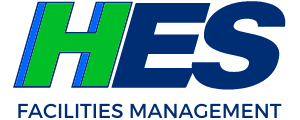We all know 2021 has been a challenge for everyone involved with education. After a fluid, unpredictable series of school openings and closings in the spring, students, parents, administrators, teachers, and staff are preparing (and hoping) for a smoother back-to-school transition in the next few weeks. But are your facilities ready?
COVID-19 left many educational facilities used sporadically – or not at all – for months at a time. Whether for K-12 or higher education, a successful return to in-person learning requires a comprehensive approach to facilities management, one that takes into account the fluctuating demands of the past year and the potential challenges to come from new variants in the coming year.
Lean on your facilities team
Classrooms, sports facilities, administrative offices, restrooms, and locker rooms demand school-specific facilities expertise to ensure that every square foot of space is clean, well maintained, and student-ready.
Lean on your facilities management team to create a learning environment that invigorates staff and students while minimizing the risk of illness. Here are some steps you can take to make sure your educational facilities are set for success.
Safety first
Safety is the number-one priority for any educational facility. Start with your safety and alarm systems and use your facility services provider as a resource.
- Confirm all state or district inspections and certificates are up to date. Work with your local fire department to ensure compliance.
- Conduct visual and physical inspections of your entire school campus.
- Be sure to check for blocked or locked emergency exits.
- Check emergency lighting and exit signs. Are all bulbs working? Are generators working as intended?
- Test smoke and heat sensors. Recalibrate as necessary.
- Make sure fire extinguishers and other safety equipment are properly tagged and inventoried. Work with the manufacturer to test all equipment.
- Work with your facilities team to update your emergency response plan, then share it with staff, administrators, and any other key stakeholders.
Build in time for buildings
Especially in spaces that have been closed, ask your facilities team to check your buildings from roof to basement. Your facilities team will ensure everything is in order, from proper water pressure in restroom sinks to clean, bug-free storage areas.
- Have all roofs inspected and plan any necessary repairs as quickly as possible.
- Ensure any rooftop mechanicals are functioning properly.
- Visually inspect all equipment that carries water: pipes, hoses, water heaters, sinks, toilets, showers, sprinkler systems, and dishwashers. Look for leaks or drainage issues. Don’t let a small, unnoticed issue become a major problem!
Have a look at HVAC
Your HVAC system is one of the most important assets your school has. From freezing winds to humid summer heat, your HVAC system never takes a day off.
We’ve already talked about the importance of air quality in educational environments, and how a properly maintained HVAC system helps students stay safe and productive. Your facilities team can keep it in top shape with a comprehensive maintenance and inspection program.
- If you don’t already have a robust HVAC maintenance schedule in place, ask your facilities team to provide one, setting up daily, weekly, monthly, and yearly jobs. This should include an annual inspection of refrigerant levels.
- Inspect vents for condensation, debris, or built-up dust.
- Ensure coils and filters are clean and functioning properly.
- Address any leaks, corrosion, or water pressure issues immediately.
- Boiler inspections are important – especially if a school building has been empty for a while.
Focus on preventive maintenance
When students return to your campus, responsive maintenance will probably take center stage. From stuck lockers to leaky faucets, you’ll see daily wear and tear that needs immediate attention. Prepare for these emerging priorities by focusing on preventive maintenance before you open the doors.
Preventive maintenance programs are carefully designed to manage long-term costs. An expert facilities team will schedule routine maintenance for your school’s equipment in advance, often combining professional expertise with asset management software for the most thorough approach.
Building out a well-rounded proactive maintenance program helps you avoid costly emergency repairs. Other benefits include:
- Increased equipment efficiency
- Prolonged life of vital equipment
- Decreased equipment downtime
- Decreased corrective work orders
The key, of course, is on planning ahead. Ask your facilities management provider for recommendations regarding your optimal preventive maintenance schedule.
Keep it clean
Educational institutions are focused on safe practices, clean facilities, and community well-being, now more than ever. The cornerstone of any back-to-school plan is a comprehensive cleaning and disinfecting strategy.
Rely on custodial experts for help – particularly those who focus exclusively on educational facilities. Your facilities provider should understand the unique requirements of student spaces, from kindergarten coat rooms to university lecture halls.
An effective cleaning and disinfecting plan will be based on:
- School-specific policies and procedures
- Hands-on provider experience and industry best practices
- OSHA and CDC guidelines
- Proper staffing, job scheduling, and responsive work processes
- Extensive team training, including proper use of cleaning solutions, disinfectants, and PPE
- Technology-based tracking of cleaning and disinfecting results
- Clear channels of communication
- Contingency plans developed well ahead of any potential pandemic or health crisis events
It’s a lot to take on – but with the right facilities management provider, your school will be ready to open its doors to students, staff, families, and the community.
Work with the right facilities management team
Want to know more about how the right facilities management partner can help your educational facility get ready for back-to-school? Contact us at info@hesfacilities.com.
Disclaimer
The illustrations, instructions, and principles contained in this website are general in scope and for marketing purposes. We assume no responsibility for: managing or controlling customer activities, implementing any recommended measures, or identifying all potential hazards.

